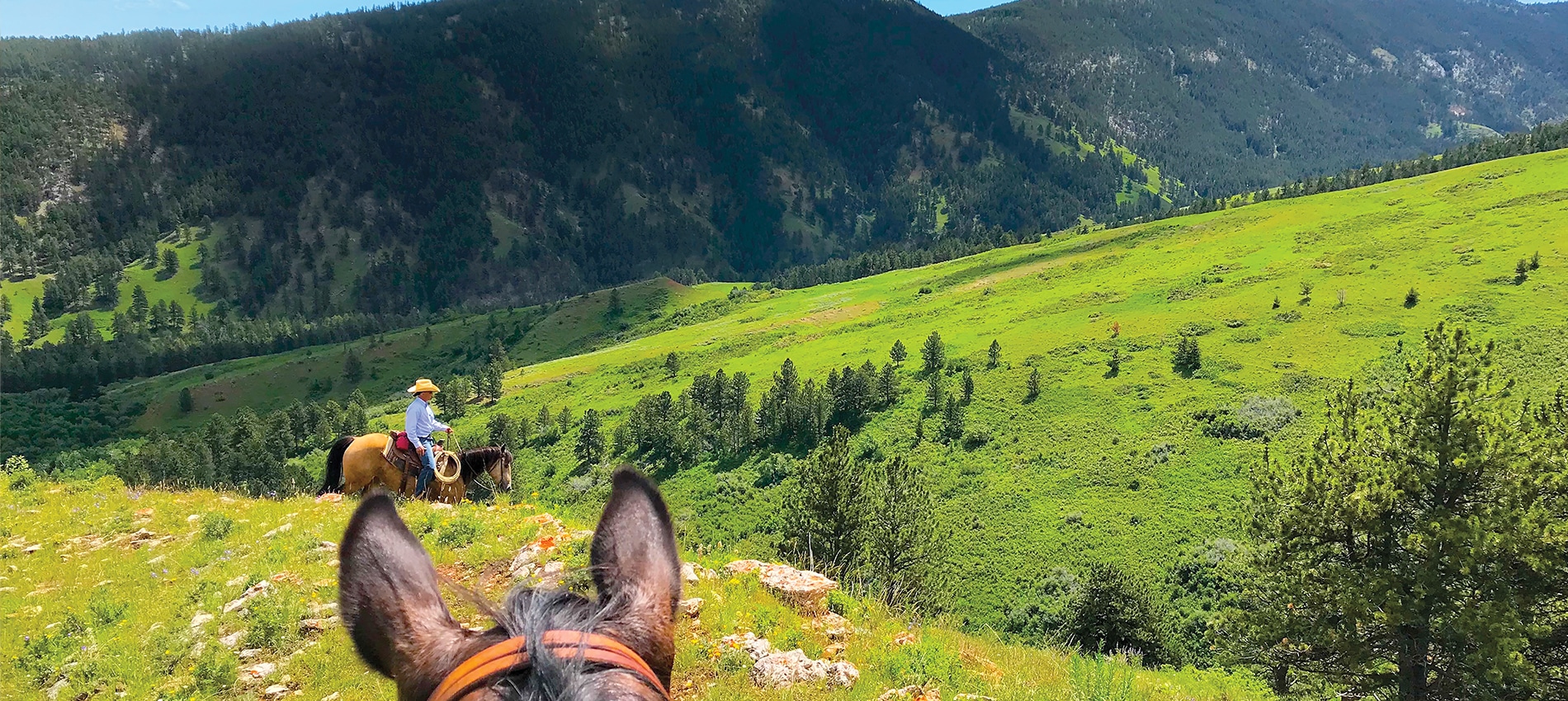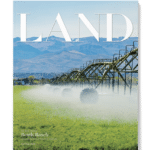
This article is featured in the Summer 2022 issue of LAND magazine. Click here to find out more.
Born and raised on a working ranch in the Powder River Basin of Wyoming, John and Galen Chase, who co-founded Chase Brothers Land & Ranch Brokerage in 2010, are the real deal.
“With us, what you see is what you get,” said John. “We aren’t about fancy trucks and fancy hats, we’re about authenticity and the lifestyle. We live it, so we understand the culture and know all the benefits and the challenges.”
Instead of being flashy or pushy, the Chase brothers and their hand-picked team of real estate professionals, are down-to-earth, practical people who have lived and breathed ranching. They pride themselves on personal integrity and long-term relationships.
“We invest ourselves in our clients’ best interests from the beginning to the end of the deal—and from then on,” said John, who with his brother, bring experience in land management and beef production expertise to the ranch realty business. “Selling real estate is how we make our living, but the relationships we establish along the way are the most important part.”
The brothers understand that personal integrity and honesty is the key to building relationships that stand the test of business—and time.
“Integrity encompasses everything we do,” John said. “It’s the way our parents raised us. It’s who we are.”
Land Lessons
John, Galen and their sister, who now lives in Bozeman, Montana, grew up working alongside their parents on their family’s 32,000-acre, non-irrigated ranch, located 40 miles east of Sheridan. Despite the unpredictability of rainfall, the family operated Buffalo Creek Red Angus, which at the time was one of the largest and most reputable Red Angus seedstock operations in the world.
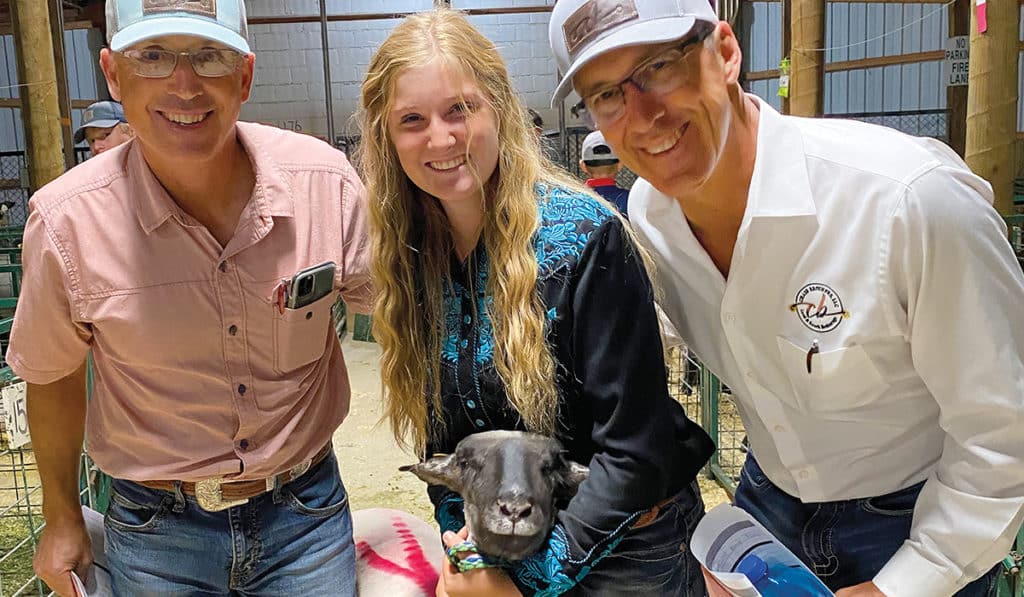
The ranch’s tagline? Dependable cattle backed by dependable people.
The family stood behind the cattle they raised. If a customer was ever dissatisfied with a bull or a heifer for any reason, their dad, Jack Chase loaded a replacement in the trailer and delivered it to the client, no questions asked. Their word was their bond. The Chase name was behind the Lazy JC brand. Exceeding the expectations of their customers was the family’s top priority because they all wanted to be associated with excellence.
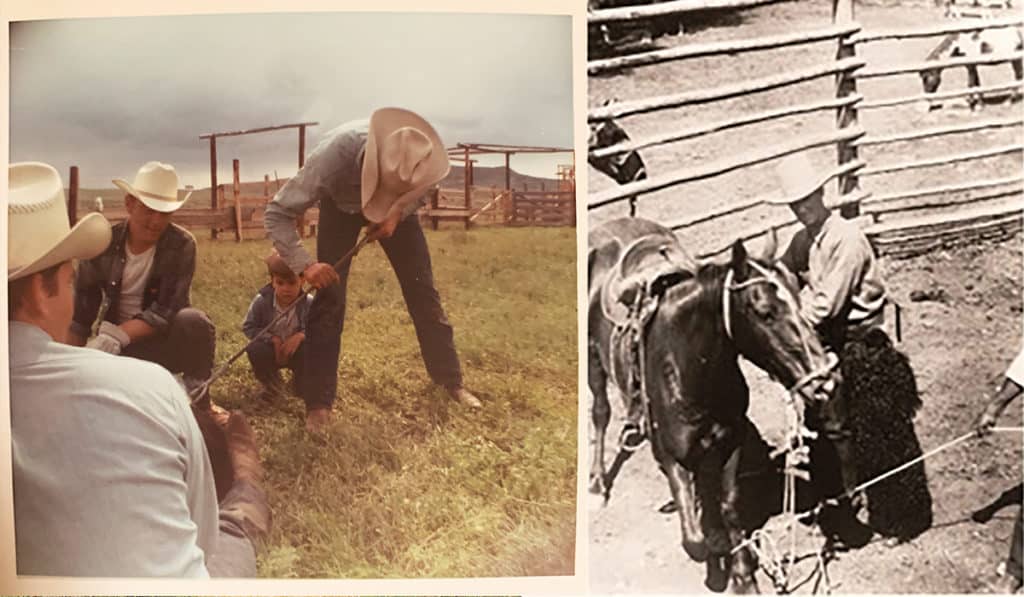
“We’ve just always lived our lives that way,” John said. “It’s worked out pretty well for us—and our clients.”
The brothers, veterans of 4-H and smalltown life, worked on the family’s ranch until they left for college. They cut their teeth working long days in a brittle landscape environment where the annual precipitation averaged 13 inches and they had to make do with whatever moisture came from the sky.
Upon high school graduation, Galen took off for Texas where he worked in the horse industry before returning to Colorado State University and earning an animal science degree. John headed to Colorado College, where he studied geology and then lived in Vail, Colorado for 10 years where he built custom homes and met his wife, Karen.
Before the couple re-entered ranching, John spent two semesters at Colorado State University. During this time, he encountered and learned from forward-thinking professors and agriculture professionals, who introduced him to the principles of regenerative agriculture while he was studying beef production systems and learning about land management.
“The ideas they planted in me inspired me to think about better ways to manage land and systems including cattle,” said John, who later completed the Ranching for Profit school that embraces this “big picture” approach to ranching. “The adaptive, decision-making process encompasses ecological, economic and social goals, which leads to sustainability.”
Galen and his wife, Jill, went to manage the Switchback Ranch, a large ranch in the northern Rockies, with operations in Roscoe, Montana and Cody, Wyoming. John and Karen moved to a large, mostly public lands ranch in Hyattville, Wyoming.
During this time, both John and Galen were fortunate enough to work for progressive new owners who were also interested in improving ranch operations. Both brothers were encouraged to attend a Ranching for Profit school and were able to start implementing some of the practices on the respective ranches they were managing.
The Hyatt Ranch (aka Paintrock Canyon Enterprises), which John managed, encompassed more than 80,000 acres including expansive Bureau of Land Management and Forest Service grazing allotments and 5,000 acres of deeded land, a large part of which was irrigated. Irrigation was new to John who had only known dry and dusty landscapes
“Water is a gift,” John said. “Irrigation gives you some control over things that you generally have no control over. Without it, you’ve got to make do with what falls from the sky and how you manage the top couple millimeters of soil. This management strategy is critical for water absorption to the root zone, decreasing bare ground, and building root and soil structure.”
The brothers returned to the family ranch with even more experience under their belts. Despite adopting new approaches and everyone’s best efforts, the family decided to sell the ranch in 2010.
“Selling our ranch was one of the hardest things I’ve ever experienced, but I had a choice,” John said. “I could either look back in regret or recognize that our time on that land delivered the life lessons that I needed to achieve what was next for me in life. I chose to let the lessons carry me forward.”
“We don’t just sell it, we live it day in and day out—and we want to help our clients live it and love it, too.”
—JOHN CHASE Chase Brothers Land & Ranch Brokerage.
Brothers in Business
As John worked alongside his family on their ranch, he also began consulting for a neighbor, introducing her to regenerative agriculture. In 2004, she announced she was ready to sell the Fence Creek Ranch. John, thinking people in his network would be interested, volunteered to sell it. At this juncture, his ranching background segued into land and ranch real estate.
“At the time, I didn’t even realize that I needed a license,” said John, laughing.
John acquired his license. Once licensed, he started marketing the ranch at a price all other brokers told him was too high. Typical of how the Chase Brothers team still operates, he put his passion into marketing the ranch and sold it after just a few months in the spring of 2005.
Initially, John was affiliated with Century 21 in Sheridan, Wyoming. In 2006, Galen joined him. They tag-teamed deals and people began referring to them as the Chase Brothers. Four years later, they embraced the moniker and launched Chase Brothers Land & Ranch Brokerage.
“Neither of us liked sitting in meetings and hearing about houses because that’s not where our expertise or passion lies,” John said. “It made sense for us to build a business based on the things we know and love.”
From the beginning, they committed themselves to “linking landscapes and lifestyles— one relationship at a time.” The formula has worked for them.
“Our goal isn’t to be the biggest, but to be the best at exceeding client’s expectations,” John said. “We get to know every piece of land as if it’s our own and do every deal as if it’s the only one.”
Although growth for growth’s sake isn’t an objective, the brothers’ team and its reach has expanded over the past 12 years. They are both licensed in Wyoming and Montana, and Galen holds a license in South Dakota, and Nebraska so the company can represent sellers and buyers in a larger area now.
Their team numbers have grown. The brothers didn’t seek out the other professionals, instead those like-minded folks came looking to join them. Not everyone who inquired was the right fit.
“We want everybody who works with us to ride for our brand,” John said. “Our brand is our reputation for hard work, fair dealing and real-world experience. It’s what people expect from us—and it’s what we expect from people who represent us.”
Regardless of who represents the Chase Brothers, the first step is getting to know the clients and their goals, whether they are buyers or sellers.
“We spend a lot of time identifying people’s goals and interests,” John said. “Once we know what they need and what they want, then we know how to do the best job for them.”
In the case of buyers, especially out-of-state buyers, the team will dedicate plenty of time to showing the buyers around the area they’re interested in. They show them various communities and let them sample the local flavor, so the clients can identify where they are most interested in staking a claim.
“Before people buy land, it’s good to bridge the culture and experience gap by talking about the realities of life here,” John said. “We give straight answers and don’t sugarcoat things because we want people’s expectations to line up with what they will likely experience. Honesty works out better for everyone in the long run.”
In the case of sellers, the team gets to know the seller’s land intimately so they can market it and show it to its best advantage.
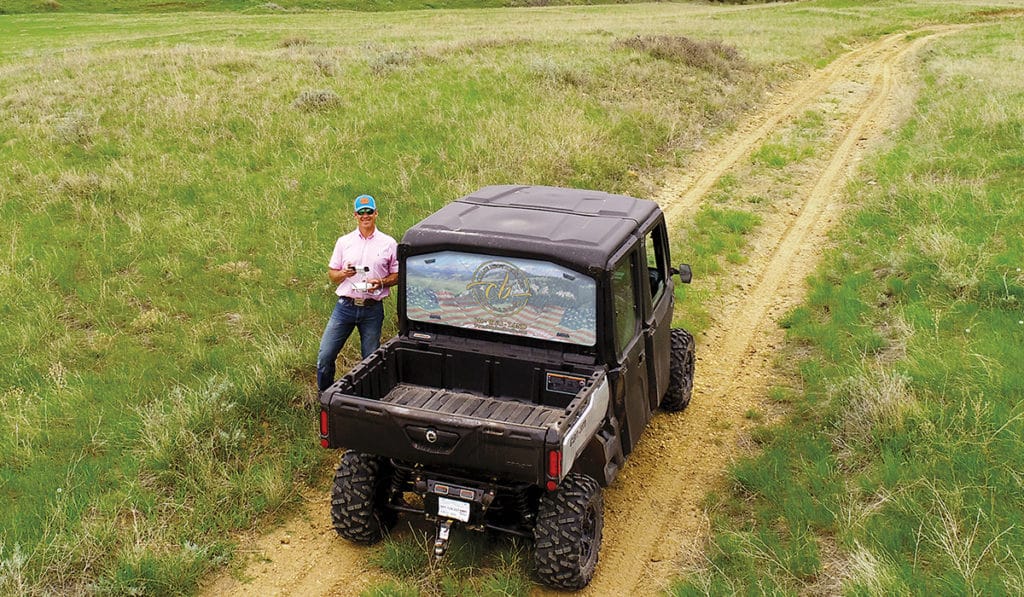
One of the best vantage points is the bird’s-eye view provided by a drone. John is a licensed, professional drone pilot. By traveling with his drones and camera, John is always ready to capture the images that tell the land’s story best.
“Because we never have to wait on photography or videography, we can move a listing process forward without delay,” John said. “A picture is worth a thousand words, especially when the photographer’s lifelong love of the land shines through…” While the brothers appreciate the uniqueness of each property, they are realistic about the land’s value.
“We’ve lost some listings because we are very honest about price, and sometimes our professional opinion of value and the seller’s unrealistic price expectations are not on the same page,” John said.
They also stand in the seller’s boots.
“People sell land for lots of different reasons, but all of them are deeply personal and emotional,” John said. “We know first-hand what that feels like and have a great deal of respect for the people and the process. It is not a responsibility we take lightly.”
The Business of Land
During the COVID pandemic, Americans reassessed their priorities. For many people, open space and freedom rose to the top of their lists. As a result, the lure of the Mountain West—and demand for land there—is stronger than ever.
“If you crowd rats together in a cage, they’ll turn on each other,” John said jokingly. “Out here our neighbors have some distance. People perceive the states we work in as a place where freedom still exists and where they have plenty of elbow room.”
He continued, “We have less city and more friendliness. Neighbors still help neighbors, so our sense of community is strong. People are being drawn to the quality of life here.”
Some who come are interested in agriculture or other land-based enterprises. Others are seeking recreation through hunting, angling and a variety of additional pursuits. Still others are investors, who view land as a solid investment, that unlike the stock market delivers personal satisfaction while serving as a hedge against inflation.
In Wyoming, South Dakota and Montana, there is a tax benefit to keeping land in agricultural production. Agricultural land, for tax purposes, is assessed on its production value not its market value, which lowers the tax burden. While tax benefits are an obvious incentive to keep land productive, the market can also reward good stewardship.
John used the Fence Creek Ranch, which was his first real estate deal as example. The purchaser was an avid outdoorsman who understood ecological systems. During his tenure, the owner implemented rotational grazing, improved stock watering systems, and actively managed the wildlife herds with goal of improving the habitat and soil condition. When the owner chose to sell the ranch years later, he asked the Chase Brothers to sell it at twice the price he paid. They achieved his goal.
“When you work to improve the ecological health of the land, its market value also increases John said. “In my opinion, there is no way you can go wrong by doing the right thing ecologically.”
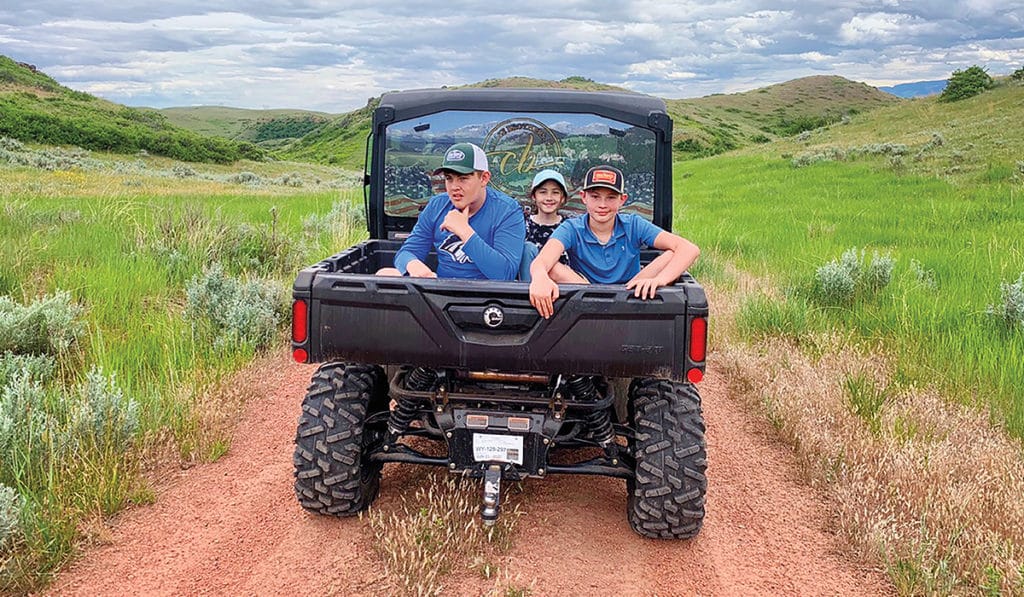
The Chase Brothers are uniquely positioned to help landowners, both new and experienced, see and capture the productive potential of their land.
“We can help people connect the dots in regenerative agriculture, so they’re not just conserving the land, but improving it,” said John, noting that livestock are not only valuable sources of food, but a tool for environmental stewardship.
While the brothers have had the chance to travel across America and the world, their corner of the West is still their favorite place. The people are genuine. And the natural beauty that provides the backdrop for a high-quality life is awe-inspiring.
“We practice what we preach,” John said. “We don’t just sell it, we live it day in and day out—and we want to help our clients live it and love it, too.”
